Cleaning and unplugging industrial pipelines
Most industrial plants and facilities have complex pipeline installations inside which fouling and deposits will inevitably accumulate. Fouling has a profound impact on pipeline throughput and might taint the material that is being transported through the pipes. Entire pipelines might also plug up.
Professional high-pressure cleaning allows us to clear and unplug pipeline systems and to remove various types of fouling that has built up in them – and periodic cleaning minimizes any potential problems in the future.
In any sector of the industry, each day of downtime means lost revenue, that’s why we respond quickly to emergency situations…and when a pipeline is totally plugged we can even send a team on-site the next day.
Piotr StelmachAlpinJet President

making it impossible
implementation of the service
What is your pipeline cleaning technology based on?
The high-pressure tools we use to clean pipelines depend on a given pipe’s diameter:
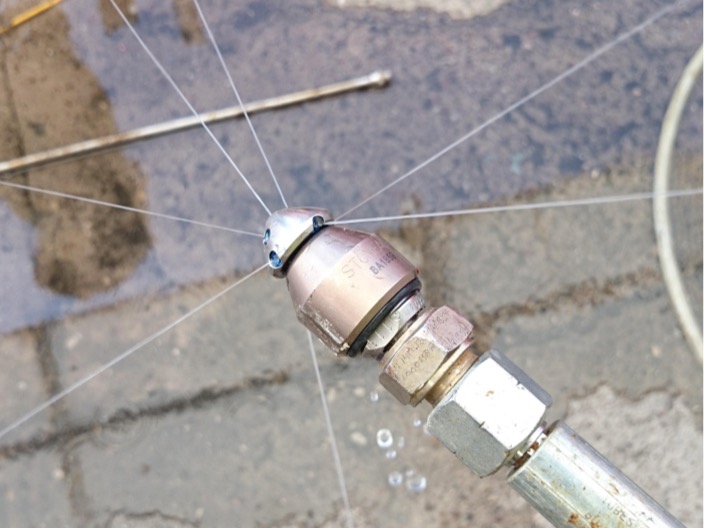
We clean small-diameter pipes by feeding a self-rotary cleaning nozzle connected to the end of a high-pressure hose into the pipe. The nozzle’s high-speed water-propelled rotating jets remove deposits by scouring the interior surface of the pipe. Rotary waterjet tools are used to clear plugged pipes and to navigate pipes with bends and elbows.
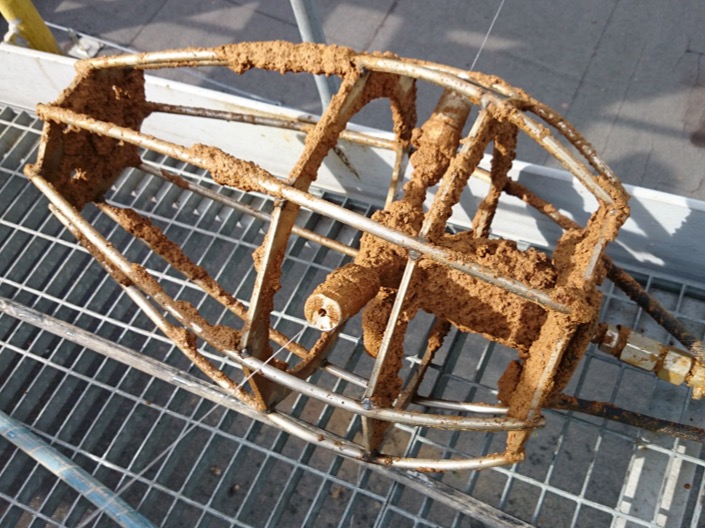
We clean medium-size diameter pipes by using a self-rotary cleaning head with radiused arms. The head is installed inside a cage-style centralizer that is then moved between inspection doors by the operator. The cleaning head’s arms and the centralizer’s diameter are adjusted to fit the diameter of the pipe that is to be cleaned.
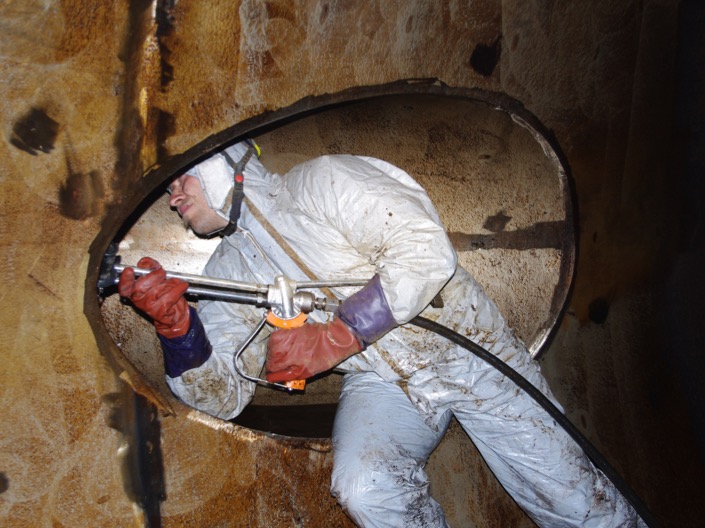
We clean large-diameter pipelines by having an operator enter the pipe and use high-pressure water jets to remove built-up fouling from the pipe’s interior surface. We also implement rope access solutions to clean vertical or inclined pipes.
Why choose us?
For over 14 years now, cleaning pipelines has been one of our most frequently conducted services. We’ve successfully completed several hundred pipeline cleaning projects, thus we can accurately assess and choose the requisite equipment for each new project.
All of our high-pressure operators are well-trained and experienced professionals. Many of them are cavers who are used to working and conducting cleaning operations in the extreme conditions and confined space of a pipeline.
Certain pipelines can be accessed and thoroughly cleaned only via using rope access methods. Most of our rope access operators possess all the necessary international certification and are IRATA certified.
We foster a highly rewarding, performance-based work environment. This translates into commitment and self-motivation from our experienced, full-time operators who make sure every task is completed in a highly efficient, timely manner.
We know that every day of unplanned downtime at an industrial facility brings huge losses, that’s why in emergency situations we try to send our team on-site as soon as possible, even the next day.
Because we work in extremely difficult environments, following safety standards and procedures is our top priority. Our operators are equipped with all the requisite PPE and possess all necessary certification to conduct cleaning tasks.
High safety procedures
We work in extremely dangerous and demanding environments. Operating at heights, inside a pipeline, in oxygen-deprived or flammable conditions or requiring the use of chemicals demands proper preparation and planning. We provide our cleaning services to full industry certification and strictly follow all safety procedures (Polish: BHP) during every cleaning project.
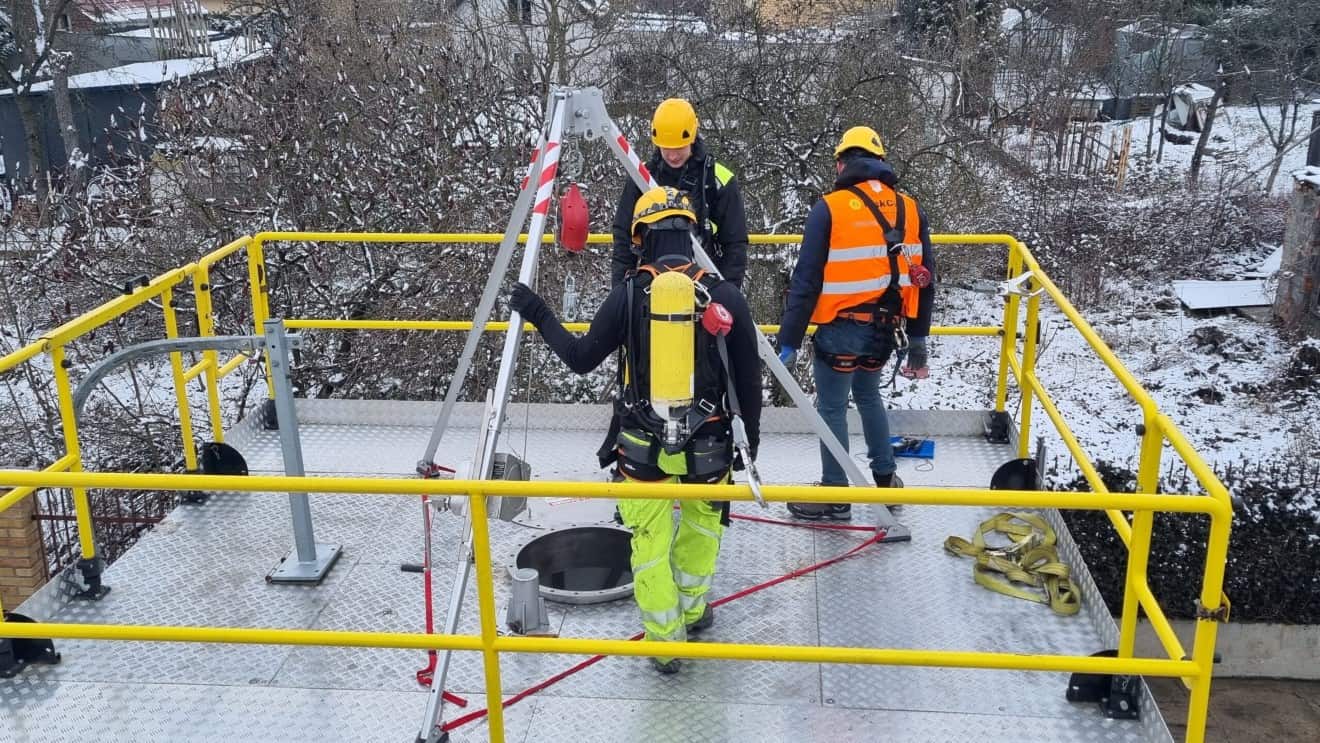
Each new employee joining our team goes through basic training and always starts as a high-pressure operator and/or industrial climber. Our industrial climbers are certified to conduct rope access work. Our most experienced waterjetting operators are qualified to operate tools at 2500 bar.
Our operators are equipped with their own sets of personal protective equipment to work in all types of hazardous environments, such as gas tight coveralls, full-face masks, and motion, low oxygen and chemical sensors. Only certified climbing equipment is used for cleaning tasks that require rope access work.
Besides conducting cleaning tasks in compliance with international policies and processes, we also implement our own, company-specific safety procedures that we have worked out over the years. Our procedures pertain to operator safety, proper choice of equipment and harnesses, and to the entire cleaning process.
Rope access
We can implement our rope access expertise and methods in any given cleaning project, which allows for greater overall flexibility and safety performance. Our work-at-height operators are certified by industry-leading associations such as IRATA and OTDL, and most of them are members of the Polish Alpinist Association.
Cleaning using rope access methods allows to efficiently remove fouling and debris where other cleaning methods and solutions would be more difficult or even impossible to implement. This is both time- and cost-effective for the client.
Although a cleaning task might not demand work-at-height operators, our team includes industrial climbers and cavers – professionals who are used to working in completely dark, confined and damp spaces – thus we can efficiently conduct cleaning operations in the most difficult, hard-to-access places.
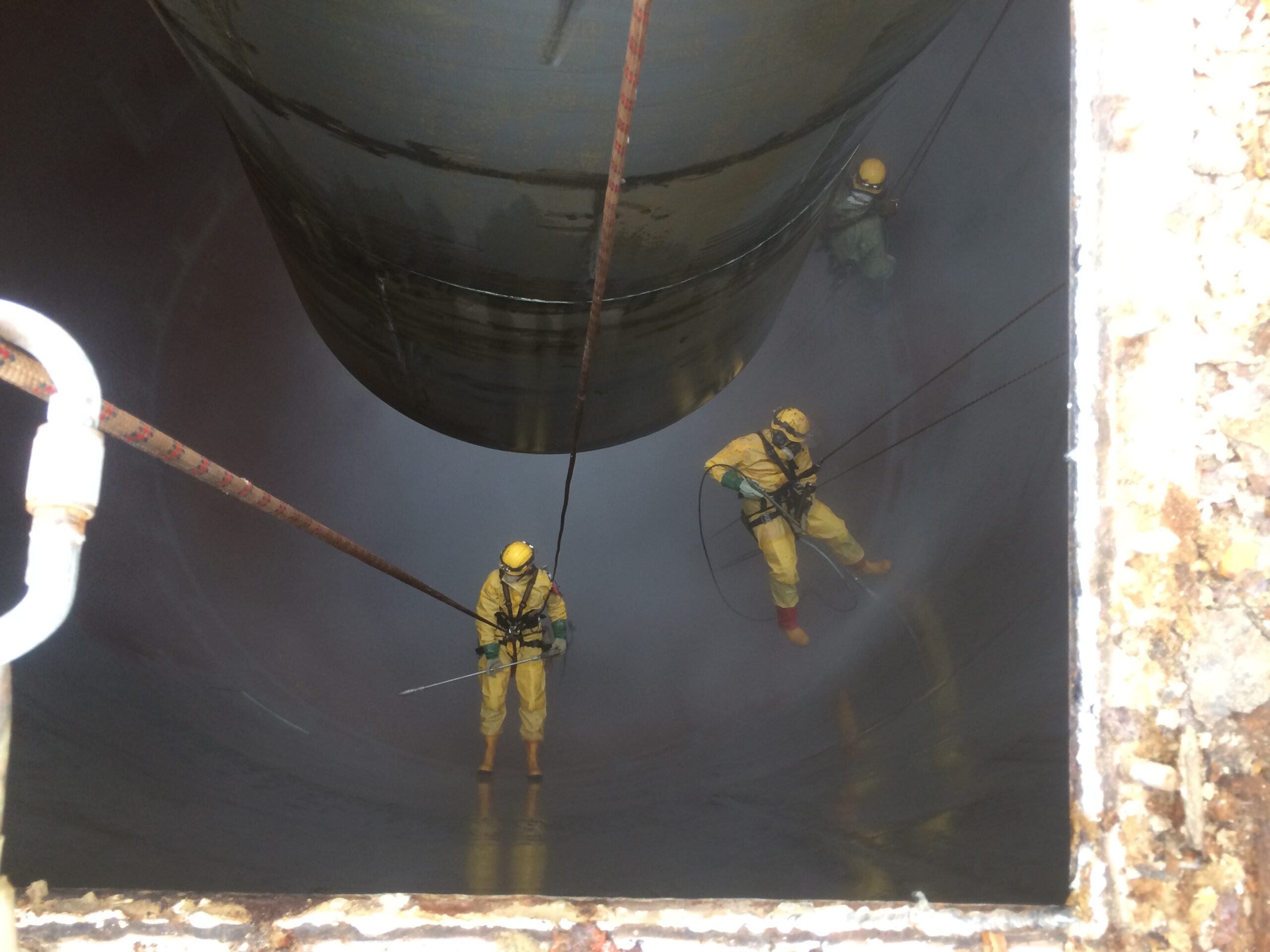
Experience
We have over 14 years’ experience in cleaning all types of industrial installations of various size, shape and use. Successfully completing cleaning projects across a variety of industrial sectors – from food & beverage to petrochemical – means we possess the hands-on experience and professional know-how necessary to handle any deep clean task to remove various types of fouling, sediment deposits and heavy debris.
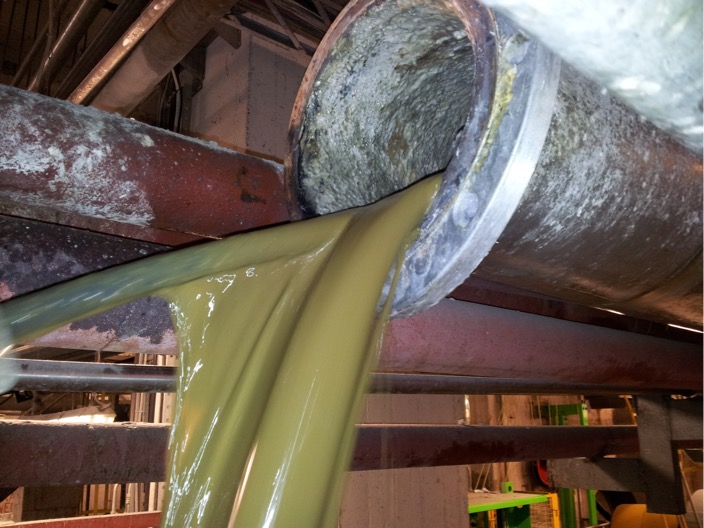
A heavily soiled cellulose pipe was cleaned at a paper mill by using a waterjetting tool with radial nozzles.
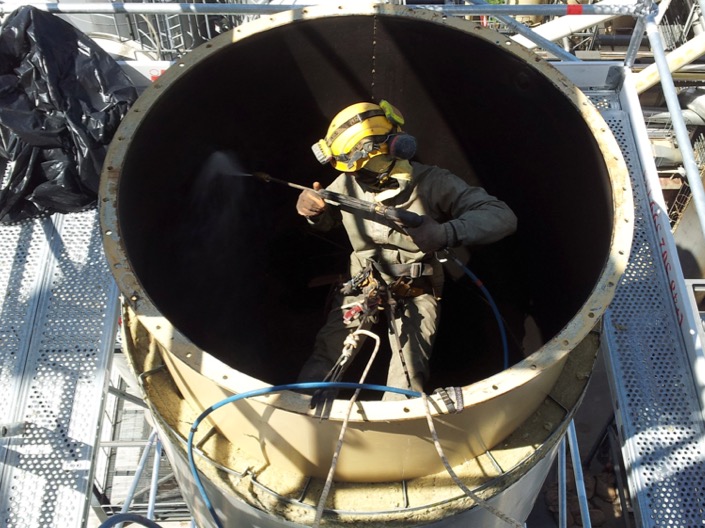
Cleaning during a long-period renovation of a partially disassembled pipeline that transported wood material.
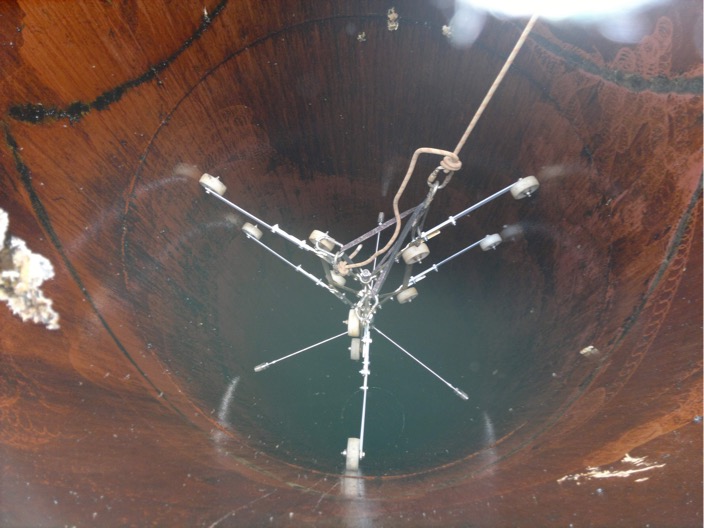
A large-diameter vertical pipe was cleaned with a head mounted to a centralized positioning device.
Industries we’ve worked for
production
production
processing
Equipment
We use mainly our own equipment during cleaning tasks. Our entire selection of tools and machines – from high-pressure water pumps through power units to pipeline cleaning nozzles – is purchased brand-new, directly from the manufacturers. This guarantees the highest quality of the tools we use and eliminates any unforeseen equipment failures. Our many years of experience allow us flexibility when selecting the optimal applications from each manufacturer’s array of ready-to-use equipment. If necessary, we can develop custom solutions and implement our own applications that are unavailable to competitive cleaning service providers. This allows us to adapt all our tools and equipment to meet the unique demands of each cleaning project.

pompy wysokociśnieniowe
dysz i głowic wysokociśnieniowych
głowic do czyszczenia dużych rurociągów
Highest standards guaranteed
There is no room for error in any industry – as time and reliability count the most – that is why we are dedicated to maintaining strong safety performance. We meet all safety standards as detailed in ISO 9001, 14001 and 45001 certification. For many years we belonged to the prestigious American WaterJet Technology Association (WJTA), and most of our rope access operators are Polish Alpinist Association members.
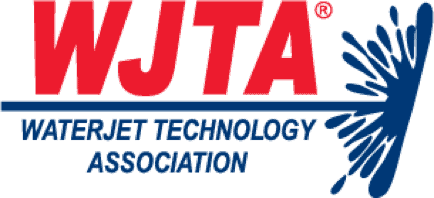
For many years, we belonged to the prestigious international WaterJet Technology Association (WJTA) which brings together key players in the waterjetting business.

We have ISO 9001, 14001 and 45001 certificates confirming compliance with safety standards for high-pressure waterblasting and rope access services.

Each project requiring the use of rope access methods is organized and supervised by a qualified Polish Alpinist Association instructor.
FAQs
Below are our answers to our clients’ most frequent questions regarding cleaning and unplugging industrial pipelines.
Can a pipeline with a large number of bends be thoroughly cleaned?
Generally yes, although please note that each elbow constitutes a separate item inside which the hose has to bend, thus increasing the hose’s friction against the pipe’s interior wall. This makes the cleaning task more difficult, and multiple bends might lead to the hose getting stuck inside the pipeline. We recommend preparing the pipe installation so that the number of bends and turns along one section to be cleaned is as small as possible.
Can high-pressure waterjetting damage the surface that is being cleaned?
That depends on how hard the built-up fouling, or scale, is and how strong the surface is on which that scale has accumulated. The least favorable situation is when hard scale has built up on a delicate surface, and in such cases, although extremely rare, it is practically impossible to remove all of the scale build-up.
Most industrial installations are made from carbon or acid-resistant steel, and such surfaces are resistant to the high-pressure water stream. Waterjetting is thus a non-abrasive and safe industrial cleaning method.
What types of fouling do you remove during the waterjetting operation?
We use high-pressure waterjetting equipment to clean various industrial fouling that has built up, including resins, glues, old paint coatings, paints, varnishes, tars, polymers, oils, waxes and greases, dusts and grit, rubber, petroleum substances, corroded concrete, limescale, rust, sludge and silts, algae, biofilm, most organic and inorganic substances and all other types of industrial-specific deposits.
Would you like to see our answers to other questions? Please go to our FAQs
Please contact our office if you have any questions or a cleaning project for us.
Our expert staff will contact you promptly to answer any questions.


